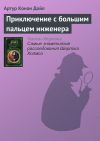Текст книги "Неизвестная история человечества"

Автор книги: Ричард Томпсон
Жанр: Зарубежная образовательная литература, Наука и Образование
сообщить о неприемлемом содержимом
Текущая страница: 32 (всего у книги 34 страниц)
В 1985 году Алан Уокер (Alan Walker) из Университета Джона Хопкинса к западу от озера Туркана обнаружил темный минерализованный ископаемый череп гоминида. Названный «Черным черепом», он внес большую путаницу во взгляды Дональда Йохансона на эволюцию гоминидов.
По первоначальной версии Йохансона, Australopithecus afarensis дал начало двум линиям гоминидов. Схематично это будет выглядеть как дерево с двумя ветвями. Ствол – это Australopithecus afarensis. Ветвь Homo идет от Homo habilis через Homo erectusкHomo sapiens. На второй ветви – австралопитеки, которые произошли от Australopithecus afarensis.
Дональд Йохансон и Тим Уайт утверждали, что Australopithecus afarensis дал начало виду Australopithecusafricanus, от которого, в свою очередь, произошел Australopithecus robustus. Изменения происходили в направлении увеличения зубов и челюстей, а также размеров черепа с костяным стреловидным гребнем. Стреловидный гребень на черепе могучих австралопитеков служил креплением для их мощных челюстных мышц. Предположительно от Australopithecus robustus произошел Australopithecus boisei, в котором все вышеописанные черты приняли крайние и наиболее крупные формы. «Черный череп» (индекс KNM-WT 17000) был похож на череп Australopithecus boisei, но был на 2, 5 миллиона лет его старше – старше самого старого из могучих австралопитеков.
Как Дональд Йохансон отреагировал на открытие «Черного черепа», похожего на череп Australopithecus boisei? Он признал, что «Черный череп» внес большую неразбериху в существовавшую классификацию гоминидов. Теперь стало невозможно провести единую родословную линию, берущую начало от Australopithecus afarensis и развивающуюся далее к Australopithecus africanus, Australopithecus robustus и Australopithecus boisei. Ученый предложил четыре схемы взаимного расположения этих видов, не указав, однако, какая из них, на его взгляд, является наиболее приемлемой. Йохансон сказал, что для этого он не располагает необходимым количеством фактического материала.
Неопределенность относительно количества видов гоминидов в Хадаре, а также родственных связей их потомков (Australopithecus africanus, Australopithecus robustus,Australopithecus boisei и Homo habilis) ставит перед сторонниками теории эволюции серьезные проблемы. В 1986 году Пэт Шипман заявила: «Правильнее всего будет сказать, что сегодня у нас больше нет ясного представления о том, кто от кого произошел».
Среди новых и сложных проблем центральное место отводится проблеме истоков родословной рода Homo. Пэт Шипман рассказала о коллеге Йохансона – Билле Кимбеле (Bill Kimbel), который предпринял попытку филогенетического толкования «Черного черепа». «В конце лекции об эволюции австралопитеков он стер с доски все замысловатые схемы с возможными вариантами и какое-то время смотрел на черный прямоугольник доски. Потом повернулся к аудитории и в растерянности махнул рукой», – писала Пэт Шипман. Билл Кимбел в конце концов решил, что линия Homo исходит от Australopithecus africanus. Дональд Йохансон и Тим Уайт продолжали утверждать, что человеческий род берет свое начало от Australopithecus afarensis.
Подвергнув анализу различные филогенетические варианты и найдя их результаты малоубедительными, Пэт Шипман заявила: «Мы могли бы утверждать, что вообще не располагаем данными о том, где находятся истоки родословной рода Homo, а также могли бы вывести из категории гоминидов всех представителей рода Australopithecus». Это одно из наиболее честных заявлений, сделанное ученым-палеонтологом, представляющим официальную науку.
Мы упомянули только те затронутые в данной дискуссии свидетельства, которые сегодня признает большинство ученых. Не стоит и говорить, что если бы мы стали обсуждать свидетельства в пользу анатомически современных людей, живших еще в древнейшие времена, то это осложнило бы вопрос еще больше.
Рассмотрев историю открытий на Африканском континенте, имеющих отношение к эволюции человека, мы можем сделать некоторые обобщения.
1. Существенное количество обнаруженных в Африке ископаемых свидетельств говорит о том, что похожие на современного человека существа могли обитать там еще в эпоху раннего плейстоцена и плиоцена.
2. Общепринятый образ Anstralopithecus как прямоходящего человекообразного существа не соответствует истине.
3. Статус Australopithecus и Homo erectus как прародителей человека является спорным.
4. Статус Homo habilis как отдельного вида представляется сомнительным.
5. Даже если не выходить за круг общепризнанных свидетельств, многообразие возникающих среди африканских гоминидов эволюционных связей лишает картину полной ясности.
Объединив эти находки и открытия, описанные в предыдущих главах, мы заключаем, что все они, включая ископаемые кости и артефакты, полностью согласуются с точкой зрения, согласно которой современные, с анатомической точки зрения, люди сосуществовали с другими приматами в течение десятков миллионов лет.
Обзор аномальных свидетельств о существовании человека в глубокой древности
Находки, упомянутые в этой книге, расположены в соответствии с их возрастом, опубликованные сведения о котором авторы считают наиболее достоверными либо заслуживающими внимания. Ниже приводятся значения терминов, использованных в данной таблице:
эолиты – осколки камня естественного происхождения с намеренно заостренным либо сточенным от долгого употребления краем или краями;
палеолиты – камни, обработанные таким образом, что можно их признать орудиями труда;
неолиты – наиболее совершенные каменные орудия труда и приспособления;
человеческий – классифицированный по меньшей мере несколькими исследователями как соответствующий анатомии современного человека;
надрезанные, разрубленные, гравированные или заостренные кости – кости животных, обработанные с определенной целью.
ЧАСТЬ I. Обзор аномальных свидетельств о существовании человека в глубокой древности (Общая часть)












Перечисленные ниже находки, датируемые плейстоценом, могут считаться аномальными лишь для Северной и Южной Америки. По мнению подавляющего большинства ученых, первые люди появились в Северной Америке не ранее 12 000 (0, 012 миллиона) лет назад. Знак вопроса указывает на то, что последующее применение радиоактивно-углеродистого метода позволило уточнить их возраст, оказавшийся менее 10 000 лет.
ЧАСТЬ II. Обзор аномальных свидетельств о существовании человека в глубокой древности (Только по Северной и Южной Америке)


Библиография
Aigner, J. S. (1978) Pleistocene faunal and cultural stations in south China. In Ikawa-Smith, F., ed. Early Paleolithic in South and East Asia. The Hague, Mouton pp. 129—162.
Aigner, J. S. (1981) Archaeological Remains in Pleistocene China. Munich, С. Н. Beck.
Aigner, J. S., and Laughton, W. S. (1973) The dating of Lantian man and his significance for analyzing trends in human evolution. American Journal of Physical Anthropology, 39(1): 97-110.
Alexander, Н. L. (1978) The legalistic approach to early man studies. In Bryan, A. L., ed. Early Man in America from a Circum-Pacific Perspective. Edmonton, Archaeological Researches International, pp. 20-22.
Alsoszatai-Petheo, J. (1986) An alternative paradigm for the study of early man in the New World. In Bryan, A. L., ed. New Evidence for the Pleistocene Peopling of the Americas. Orono, Maine, Center for the Study of Early Man, pp. 15-26.
Ameghino, C. (1915) El femur de Miramar, Anales delMuseo nacionalde historia natural de Buenos Aires. 26: 433—450. (*)
Ameghino. F. (1908) Notas preliminares sobre el Tetraprothomo argentinus. un precursor del hombre del mioceno superior de Monte Hennoso. Anales del Museo nacional de historia natural de Buenos Aires, 16: 105—242. (*)
Ameghino, F. (1909) Le Diprothomo platensis, un precurseur de 1'homme du pliocene inferieur de Buenos Aires. Anales del Museo nacional de historia natural de Buenos Aires, 19: 107—209. (*)
Ameghino, F. (1910a) Vestigios industriales en el eoceno superior de Patagonia. Report to Congreso cientifico internacional americano, Buenos Aires, July 10-25, 1910, 8 pp.
Ameghino, F. (191 Ob) Vestigios industriales en la formation entrerriana (oligoceno superiorбmioceno elmds inferior). Report to Congreso cientifico internacional americano, Buenos Aires, July 10-25, 1910, 8 pp.
Ameghino, F. (1911) Enumeration chronologique et critique des notices sur les terres cuites et les scories anthropiques des terrains sedimentaires neogenes de 1'Argentine panics jusqu'a la fin de 1'annee 1907. Anales del Museo nacional de historia natural de Buenos Aires, 20: 39-80. (*)
Ameghino, F. (1912) L'age des formations sedimentaires tertiaires de 1'Argentine en relation avec 1'antiquite de 1'homme. Anales del Museo nacional de historia natural de Buenos Aires, 22: 45-75. (*)
Anderson, E. (1984) Who's who in the Pleistocene: a mammalian bestiary. In Martin, P. S., and Klein, R. G., eds. Quaternary Extinctions. Tucson, University of Arizona Press, pp. 40-90.
Ayres, W. 0. (1882) The ancient man of Calaveras. American Naturalist,
Aigner, J. S. (1978) Pleistocene faunal and cultural stations in south China. In Ikawa-Smith, F., ed. Early Paleolithic in South and East Asia. The Hague, Mouton, pp. 129—162.
Aigner, J. S. (1981) Archaeological Remains in Pleistocene China. Munich, С. Н. Beck.
Aigner, J. S., and Laughton, W. S. (1973) The dating of Lantian man and his significance for analyzing trends in human evolution. American Journal ofPhysical Anthropology, 39(1): 97-110.
Alexander, Н. L. (1978) The legalistic approach to early man studies. In Bryan, A. L., ed. Early Man in America from a Circum-Pacific Perspective. Edmonton, Archaeological Researches International, pp. 20-22.
Alsoszatai-Petheo, J. (1986)An alternative paradigm for the study of early man in the New World. In Bryan, A. L., ed. New Evidence for the PleistocenePeopling of the Americas. Orono, Maine, Center for the Study of Early Man, pp. 15-26.
Ameghino, C. (1915) El femur de Miramar, Anales del Museo nacional de historianatural de Buenos Aires, 26: 433—450. (*)
Ameghino, F. (1908) Notas preliminares sobre el Tetraprothomo argentinus, un precursor del hombre del mioceno superior de Monte Hennoso. Anales delMuseo nacional de historia natural de Buenos Aires. 16: 105—242. (*)
Ameghino, F. (1909) Le Diprothomo platensis, un precurseur de 1'homme du pliocene inferieur de Buenos Aires. Anales del Museo nacional de historianatural de Buenos Aires, 19: 107—209. (*)
Ameghino, F. (1910a) Vestigios industriales en el eoceno superior de Patagonia. Report to Congreso cientifico internacional americano, Buenos Aires, July 10-25, 1910, 8pp.
Ameghino, F. (1910b) Vestigios industriales en la formation entrerriana(oligoceno superiorбmioceno el mds inferior). Report to Congreso cientifico internacional americano, Buenos Aires, July 10-25, 1910, 8 pp.
Ameghino, F. (1911) Enumeration chronologique et critique des notices sur les terres cuites et les scories anthropiques des terrains sedimentaires neogenes de 1'Argentine parues jusqu'a la fin de 1'annee 1907. Anales del Museonacional de historia natural de Buenos Aires, 20: 39-80. (*)
Ameghino, R (1912) L'age des formations sedimentaires tertiaires de 1'Argentine en relation avec 1'antiquite de 1'homme. Anales del Museo nacional dehistoria natural de Buenos Aires, 22: 45-75. (*)
Anderson, E. (1984) Who's who in the Pleistocene: a mammalian bestiary. In Martin, P. S., and Klein, R. G., eds. Quaternary Extinctions. Tucson, University of Arizona Press, pp. 40-90.
Ayres, W. 0. (1882) The ancient man of Calaveras. American Naturalist, Boswell, P. G. H. (1932) The Oldoway human skeleton. Nature, 130: 237—238.
Boswell, P. G. H. (1935) Human remains from Kanam and Kanjera, Kenya Colony. Nature, 135: 371.
Boule, M. (1923) Fossil Men: Elements of Human Paleontology. Edinburgh, Oliver and Boyd.
Boule, M. (1937) Le Sinanthrope. L'Anthropologie, 47: 1-22.
Boule, M., and Vallois, H. V. (1957) Fossil Men. London, Thames and Hudson.
Bourgeois, L. (1872) Sur les silex consideres comme portant les marques d'un travail humain et decouverls dans le terrain miocene de Thenay. CongresInternational d'Anthropologie et d'Archeologie Prehistoriques, Bruxelles1872. Compte Rendu, pp. 81-92. (*)
Bowden, M.(1977)Ape-Ato, Fact or Fallacy? Bromley, Sovereign Publications.
Bower, Bruce (1988) Retooled ancestors. Science News. 133: 344—345.
Brain, С. К. (1978) Some aspects of the South African australopithecine sites and their bone accumulations. In Jolly, C. J., ed. Early Hominids of Africa. London, Duckworth, pp. 130—161.
Braucr, G. (1984) A craniological approach to the origin of anatomically modern Homo sapiens in Africa, and implications for the appearance of modern Europeans. In Smith, P. H., and Spencer, F„eds. The Origin of ModemHumans: A World Survey of the Fossil Evidence. New York, Alan R. Liss, pp. 327—410.
Bray, W. (1986) Finding the earliest Americans. Nature, 321: 726.
Breuil, H. (1910) Sur la presence d'eolithes a la base de 1'Eocene Parisien. L'Anthropologie, 21: 385—408. (*)
Breuil, H. (1922) Les industries pliocenes de la region d'lpswich. Revueanihropologique, 32: 226—229. (*)
Breuil, H. (1932) Le feu et 1'industrie de pierre et d'os dans le gisement du 'Sinanthropus' a Choukoutien. L'Anthropologie, 42: 1-17. (*)
Breuil, H. (1935) L'etat actuel de nos connaissances sur les industries paleothiques de Choukoutien. L'Anthropologie, 45: 740—746. (*)
Breuil, H., and Lantier, R. (1965) The Men of the Old Stone Age. New York. St. Martin's.
Brewster, D. (1844) Queries and statements concerning a nail found imbedded in a block of sandstone obtained from Kingoodie (Mylnfield) Quarry, North Britain. Report of the British Association/or the Advancement of Science, Notices and Abstracts a/Communications, p. 51. Broad, W., and Wade, N. (1982) Betrayers of the Truth. New York, Simon and Schuster.
Broom, R. (1950) Finding the Missing Link. London. Watts.
Broom, R., and Robinson, J. T. (1952) Swartkrans ape-man. Transvaal MuseumMemoir, 6.
Broom, R., Robinson, J. Т., and Schepers, G. W. H. (1950) Sterkfontein ape-man Pieisanthropus. Transvaal Museum Memoir, 4.
Broom, R., and Schepers, G. W. H. (1946) The South African fossil ape-men, the Australopithecinae. Transvaal Museum Memoir, 2.
Brown, F., Harris, J., Leakey, R., and Walker, A. (1985) Early Homo erectus skeleton from west Lake Turkana, Kenya. Nature. 316: 788—793.
Brush, S. G. (1974) Should the history of science be rated X? Science, 183: 1164 – 1172.
Bryan, A. L. (1978) An overview of paleo-American prehistory from a circum-Pacific perspective. In Bryan, A. L., ed. Early Man inAmericafrom a Circum-Pacific Perspective. Edmonton, Archaeological Researches International, pp. 306—327.
Bryan, A. L. (1979) A preliminary look at the evidence for a standardized stone tool technology at Calico. Quarterly of the San Bemardino County MuseumAssociation, 26(4): 75-79.
Bryan, A. L. (1986) Paleoamerican prehistory as seen from South America. In Bryan, A. L., ed. New Evidence for the Pleistocene Peopling oftheAmericas. Orono, Maine, Center for the Study of Early Man, pp. 1-14.
Budiansky, S. (1987) New light on when man came down from the trees. U.S. News & World Report, June 1, pp. 10-11.
Budinger, Jr., F. E. (1983) The Calico early man site. California Geology, 66(4): 75-82.
Bunney, S. (1987) First migrants will travel back in time. New Scientist, 114(1565): 36.
Burkitt, M. C. (1956) The Old Stone Age. New York, New York University.
Burleigh, R. (1984) New World colonized in Holocene. Nature, 312: 399.
Burroughs, W. G. (1938) Human-like footprints, 250 million years old. The BereaAlumnus. Berea College, Kentucky. November, pp. 46-47.
Calvert, F. (1874) On the probable existence of man during the Miocene period. Journal of the Royal Anthropological Institute, 3: 127.
Capellini, G. (1877) Les traces de 1'homme pliocene en Toscane. CongresInternational d'Anthropologie et d'Archeologie Prehistoriques, Budapest1876, Compte Rendu. Vol. 1, pp. 46-62. (*)
Carrington, A. (1963) A Million Years Before Man. London, Weidenfeld & Nicholson.
Cartailhac, E. (1879) L'homme tertiaire. Materiauxpourl'Histoirede I'Homme, 2nd series, 11: 433—439. (*)
Carter, G. F. (1957) Pleistocene Man at San Diego. Baltimore, Johns Hopkins.
Carter, G. F. (1979) The blade and core stage at Calico. Quarterly of the SanBemardino County Museum Association, 26(4): 81-89.
Carter, G. F. (1980) Earlier Than You Think: A Personal View of Man in America. College Station, Texas A & M University.
Chang, K. (1962) New evidence on fossil man in China. Science, 136: 749—759.
Chang, К. (1977) The Archaeology of Ancient China, 3rd edition. New Haven, Yale University.
Chang, K. (1986) The Archaeology of Ancient China, 4th edition. New Haven, Yale University.
Charlesworth, E. (1873) Objects in the Red Crag of Suffolk. Journal of the Royal Anthropological Institute of Great Britain and Ireland, 2: 91-94.
Chavaillon, J., Chavaillon, N., Coppens, Y, and Senut, B. (1977) Presence d' hominide dans le site oldowayen de Gombore I a Melka Kunture, Ethiopie. Comptes Rendus deГAcademic des Sciences. Series D, 285: 961—963.
Choffat, P. (1884a) Excursion a Otta. Congres International d'Anthropologie etd'Archaeologie Prehistoriques, Lisbon 1880, Compte Rendu, pp. 61-67. (*)
Choffat, P. (1884b) Conclusions de la commission chargee de 1'examen des silex trouves a Otta. Followed by discussion. Congres International d'Anthropologie et d'Archaeologie Prehistoriques, Lisbon 1880, Compte Rendu, pp. 92-118.(*)
Clark, W. B. (1979) Fossil river beds of the Sierra Nevada. California Geology, 32: 143—149.
Cole, S. (1975) Leakey's Luck. The Life of Louis Leakey. London, Collins.
Coles, J. M. (1968) Ancient man in Europe. In Coles, J. M., and Simpson, D., eds. Studies in Ancient Europe. Bristol, Leicester University, pp. 17-43.
Cook, D. C., Buikstra, J. E., DeRousseau, C. J… and Johanson, D. C. (1983) Vertebral pathology in the Afar australopithecines. American Journal ofPhysical Anthropology, 60: 83-101.
Cooke, H. B. S. (1963) Pleistocene mammal faunas of Africa, with particular reference to Southern Africa. In Howell, F. C., and Bouliere, F., eds. AfricanEcology and Human Evolution. Chicago, Aldine, pp. 78-84.
Cooke, H. B. S. (1976) Suidae from Plio-PIeistocene strata of the Rudolf Basin. In Coppens, Y., Howell, F. C., Isaac, G., and Leakey, R. E., eds. Earliest Manand Environments in the Lake Rudolf Basin. Chicago, University of Chicago, pp. 251—263.
Coon, C. S. (1969) Origin of Races. New York, Alfred Knopf.
Cooper, C. F., and Watson, D. M. S. (1932a) The Oldoway human skeleton. Nature. 129: 312-W.
Cooper, C. F„and Watson, D. M. S. (1932b) The Oldoway human skeleton. Nature. 129: 903.
Corliss, W. R. (1978) Ancient Man: A Handbook of Puzzling A rtlfacts. Glen Arm, Sourcebook Project.
Cousins, F. W. (1971) Fossil Man. Emsworth, A. E. Norris.
Creely.R.S. (1965) Geology of the Oroville quadrangle, California. Bulletin of theCalifornia Division of Mines and Geology, 184
Cuenot, C. (1958) Teiihardde Chardin. London, Burns & Oates.
Daniloff, R., and Kopf, C. (1986) Diggingup new theories of early man. U.S. News& World Report. September 1, pp. 62-63.
Dart, R. A. (1948) The Makapansgat proto-human Australopithecus prometheus.American Journal of Physical Anthropology, New Series. 6: 259—283.
Dan, R. A. (1957)Theosteodontokeratic culture of AM.s'fra/o/?i'//iecu, t/?rewier/iei[.?. Transvaal Museum Memoirs. 10: 1-105.
Dart, R. A. (1959) Adventures with the Missing Link. New York, Viking Press.
Darwin, C. R. (1859) The Origin of Species. London, J. Murray.
Darwin, C. R. (1871) The Descent of Man. London, J. Murray.
Dawson, C., and Woodward, A. S. (1913) On the discovery of a Paleolithic human skull and mandible in a flint bearing gravel at Piltdown. Quarterly Journal ofthe Geological Society, London, 69: 117—151.
Dawson, C., and Woodward, A. S. (1914) Supplementary note on the discovery of a Palaeolithic human skull and mandible at Piltdown (Sussex). QuarterlyJournal of the Geological Society, London, 70: 82-99.
Day, M. H. (1978) Functional interpretations of the morphology of postcranial remains of early African hominids. In Jolly, C. J., ed. Early Hominids ofAfrica. London, Duckworth, pp. 311—345.
Day, M. H. (1985) Hominid locomotion – fromTaung to the Laetoli footprints. In Tobias, P. V., ed. Hominid Evolution: Past, Present, and Future. New York, Alan R. Liss, pp. 115—128.
Day, M. H. (1989) Fossil man: the hard evidence. In Durant, J. R„ed. HumanOrigins. Oxford, Clarendon, pp. 9-26.
Day, M. H., and Molleson, T. I. (1973) The Trinil femora. Symposia of the Societyfor the Study of Human Biology, 2: 127—154.
Day, M. H., and Napier, J. R. (1964) Hominid fossils from Bed I, Olduvai Gorge, Tanganyika: fossil foot bones. Nature, 201: 967—970.
Day, M. H., and Wood, B. A. (1968) Functional affinities of the Olduvai Hominid 8 talus. Man, Second Series. 3: 440—455.
De Lumley, H. (1969) A Palaeolithic camp at Nice. Scientific American, 220(5): 42-50.
De Lumley, H., de Lumley, M., Beltrao, M., Yokoyama, Y, Labeyrie, J., Delibrias, G., Falgueres, C., and Bischoff, J. L. (1988) Decouverte d'outils tallies associes a des faunes du Pleistocene moyen dans la Toca da Esperanca, Etat de Bahia, Bresil. Comptes Rendus deГAcademic des Sciences, (Series II)306: 241—247. (*)
De Monillet, G. (1883) Le Prehistorique. Paris, C. Reinwald. (*)
De Mortillet, G., and de Monillet, A. (1881) Musee Prehistorique. Paris, C. Reinwald. (*)
De Quatrefages, A. (1884) Hommes Fossiles et Hommes Sauvages. Paris, B. Baillire. (*)
De Quatrefages, A. (1887) Histoire Generate des Races Humaines. Paris, A. Hennuyer. (*)
Demere, T. A„and Cerutti, R. A. (1982) A Pliocene shark attack on a cetotheriid whale. Journal of Paleontology, 56: 1480—1482.
Deo Gratias, Rev.[D. Perrando] (1873) Sur Г homme teniaire de Savone. CongresInternational d'Anthropologie et d'Archeologie Prehistoriques, Bologna1871. Compte Rendu. pp. 417—420. (*)
Deperet, C. (1926) Fouilles prehistoriques dans le gisement des Hommes fossils de la Denise, pres le Puy-en-Velay. Comptes Rendus deГAcademic des Sciences. 182: 358—361. (*)
Desmond, A. (1976) The Hot-Blooded Dinosaurs. New York, Dial.
Desnoyers, M. J. (1863) Response a des objections faites au sujet d'incisions constatees sur des ossements de Mammiferes fossiles des environs de Chartres. Comptes Rendus deГAcademic des Sciences. 56: 1199—1204. (*)
Diamond, J. (1987) The American blitzkrieg: a mammoth undertaking. Discover, June, pp. 82-88.
Dietrich, W. 0. (1933) Zur Alters frage der Olduwaylagerstatte. Centralblatt furMineralogie, Geologic und Palaontologie, Abteilung B, 5: 299—303.
Dreimanis, A., and Goldthwait, R. P. (1973) Wisconsin glaciation in the Huron, Ene, amdOrAss'ioobes. Geological Society of America Memoir, 136: 71-106.
Drury, С. М., ed. (1976) Nine Years with the Spokane Indians: The Diary, 1838 – 1848, of Elkanah Walker. Glendale, California, Arthur H. Clark.
Dubois, E. (1932) The distinct organization of Pithecanthropus of which the femur bears evidence now confirmed from other individuals of the described species. Proceedings of the Koninklijke Nederlandse Akademie van Wetenschappen Amsterdam. 35: 716—722.
Dubois, E. (1934) New evidence of the distinct organization of Pithecanthropus. Proceedings of the Koninklijke Nederlandse Akademie van Wetenschappen Amsterdam, 37: 139—145.
Dubois, E. (1935) The sixth (fifth new) femur of Pithecanthropus erectus. Proceedings of the Koninklijke Nederlandse Akademie van Wetenschappen Amsterdam, 38: 850—852.
Dubois, W. E. (1871) On a quasi coin reported found in a boring in Illinois. Proceedings of the American Philosophical Society, 12(86): 224—228.
Durham, J. W. (1967) The incompleteness of our knowledge of the fossil record. Journal ofPaleontology, 41: 559—565.
Durrell, С. (1966) Tertiary and Quaternary geology of the northern Sierra Nevada. Bulletin of the California Division of Mines and Geology, 190: 185—197.
Eckhardt, R. В. (1972) Population genetics and human origins. Scientific American. 226(1): 94-103.
Edmunds.F. H. (1954) British Regional Geology: The Wealden District. London, Geological Survey.
Evans, P. (1971) Towards a Pleistocene time-scale. In Harland, W. В., etal., eds. The Phanerowic time-scale, a supplement. Part 2. Geological Society of London, Special Publication No. 5, pp. 123—356.
Feldesman, М. R. (1982a) Morphometric analysis of the distal humems of some Cenozoic catarrhines; the late divergence hypothesis revisited. American Journal of Physical Anthropology, 59: 73-95.
Feldesman, М. R. (1982b) Morphometrics of the ulna of some cenozoic 'homi-noids.' American Journal ofPhysical Anthropology, 57: 187.
Ferguson, W. W. (1983) An alternative interpretation of Australopithecus afarensis fossil material. Primates, 25: 397—409.
Ferguson, W. W. (1984). Revision of fossil hominidjaws from Plio/Pleistocene of Hadar, in Ethiopia including a new species of the genus Homo (Hominoidea:Homininae). Primates, 25: 519—529.
Fisher, A. (1988a) On the emergence ofhumanness. Mosaic, 19(1): 34-45.
Fisher, A. (1988b) The more things change. Mosaic, 19(I): 23-33.
Fisher, D. E. (1971) Excess rare gases in a subaerial basalt from Nigeria. Nature, 232: 60.
Fisher, 0. (1905) On the occurrence of Elephas meriodionalis at Dewlish (Dorset). Quarterly Journal of the Geological Society of London, 61: 35-38.
Fisher, 0. (1912) Some handiworks of early men of various ages. The GeologicalMagazine, London, 9: 218—222.
Fitch, F. J., and Miller, J. A. (1976) Conventional potassium-argon and argon-40/ argon-39 dating of volcanic rocks from East Rudolf. In Coppens, Y., Howell, F. C., Isaac, G., and Leakey, R. E., eds. Earliest Man and Environments in the Lake Rudolf Basin. Chicago, University of Chicago, pp. 123—147.
Fix, W. R. (1984) The Bone Peddlers. New York, Macmillan.
Fleming, S. (1976) Dating in Archaeology: A Guide to Scientific Techniques. London, Dent.
Flint, R. F. (1971) Glacial and Quaternary Geology. New York, John Wiley.
Fosdick, R. D. (1952) The Story of the Rockefeller Foundation. New York, Harper.
Freudenberg, W. (1919) Die Entdeckung von menschlichen FuBspuren und Artefakten in den tertiaren Gerolschichten und Muschelhaufen bei St. Gilles-Waes, westlich Antwerpen. Praehistorische Zeitschrift, 11: 1-56. (*)
Garrigou, F. (1873) Sur 1'etude des os casses que Г on trouve dans divers gisements paleontologiques de 1'cpoque Quaternaire et de 1'epoque Tertiaire. CongresInternational d'Anthropologie et d'Archeologie Prehistoriques, Bologna1871, Compte Rendu, pp. 130—148. (*)
Garrigou, F., andFilhol, H. (1868) М. Garrigou prie 1'Academiede vouloirbien ouvrir un pli cachete, depose au nom de М. Filhol fils et au sien, le 16 mai 1864. Comptes Rendus de I 'Academic des Sciences, 66: 819—820. (*)
The Geologist, London (1862) Fossil man. 5: 470.
Gomberg, D. N., and Latimer, B. (1984) Observations on the transverse tarsal joint of A. afarensis and some comments on the interpretation of behaviour from morphology (abstract). American Journalof PhysicalAnthropology, 61: 164.
Goodman, J. (1982) American Genesis. New York, Berkley Books.
Goodman, J. (1983) The Genesis Mystery. New York, Times Books.
Gould, R. A., Koster, D. A., and Sontz, A. H. L. (1971) The lithic assemblage of the Western Desert aborigines of Australia. American Antiquity 36(2); 149—169.
Gould, S. J., and Eldredge, N. (1977) Punctuated equilibria: the tempo and mode of evolution reconsidered. Paleobiology, 3: 115—151.
Gowlett, J. A. J. (1984) Ascent to Civilisation. London, Collins.
Graham, D. (1988) Scientist sees an early mark of man. San Diego Union, October 31.
Green, J. (1978) Sasquatch: The Apes Among Us. Seattle, Hancock House.
Griffin, J. B. (1979) The origin and dispersion of American Indians in North America. In Laughlin, W. S., and Harper, A. B„eds. The First Americans:Origins, Affinities, and Adaptations. New York, Gustav Fischer, pp. 43-55.
Griffin, J. B. (1983) The Midlands. In Jennings, J. D., ed. Ancient NorthAmericans. San Francisco, W. H. Freeman, pp. 243—302
Groves, C. P. (1989) A Theory of Human and Primate Evolution. Oxford, Clarendon.
Guidon, N… and Delibrias, G. (1986) Carbon-14 dates point to man in the Americas 32, 000 years ago. Nature. 321: 769—771.
Guo, S., Zhou, S., Meng, W, Zhang, R„Shun, S., Hao, X., Liu S., Zhang, F., Hu, R., and Liu, J. (1980) The dating of Peking man by the fission track technique. Kexue Tongbao 25(8): 384.
Haeckcl, E. (1905) The Evolution of Man. Vol. 1. New York, G. Putnam's Sons.
Han, D., and Xu, C. (1985) Pleistocene mammalian faunas of China. In Wu, R., and Olsen, J. W. eds., Palaeoanthropology and Palaeolithic Archaeology of the People's Republic of China. Orlando, Academic Press, pp. 267—289.
Harland, W. B„Cox, A. V., Llewellyn, P. G., Pickton, C. A. G., Smith, A. G., and Walters, R. (1952)A Geologic Time Scale. Cambridge, Cambridge University Press.
Harrison, E. R. (1928) Harrison of Ightham.London, Oxford University Press.
Harte, Bret (1912) The Poetical Works of BretHarte. Boston, Houghton Mifflin.
Hassan, A. A., and Ortner, D. J. (1977) Inclusions in bone material as a source of error in radiocarbon dating. Archaeometry, 19(2): 131—135.
Haynes, C. V. (1973) The Calico site: artifacts or geofacts. Science, 187: 305—310.
Heizer, R. R, and Whipple, M. A. (1951) The California Indians: A Source Book. Berkeley, University of California Press.
Herbert. W. (1983) Lucy's family problems. Science News. 124: 8-11.
Heuvelmans. В. (1962) On the Track of Unknown Animals. London, Rupert Hart-Davis.
Heuvelmans, B. (1982) What is cryptozoology? Cryptozoology, I: 1-12.
Heuvelmans, B. (1983) How many animal species remain to be discovered? Cryptozoology, 2: 1-24.
Hicks, C. S. (1933) Scientific centralisation in the British Empire. Nature, 131: 397.
Hill, 0. (1945) Nittaewo, an unsolved problem of Ceylon. Loris, 4:.21-262.
Но, Т. Y„Marcus, L. R, and Berger, R. (1969) Radiocarbon dating of petroleum-impregnated bone from tar pits at Rancho La Brea, California. Science 164: 1051—1052.
Holmes, W. H. (1899) Review of the evidence relating to auriferous gravel man in California. Smithsonian Institution Annual Report 1898—1899, pp. 419—472.
Правообладателям!
Это произведение, предположительно, находится в статусе 'public domain'. Если это не так и размещение материала нарушает чьи-либо права, то сообщите нам об этом.








































